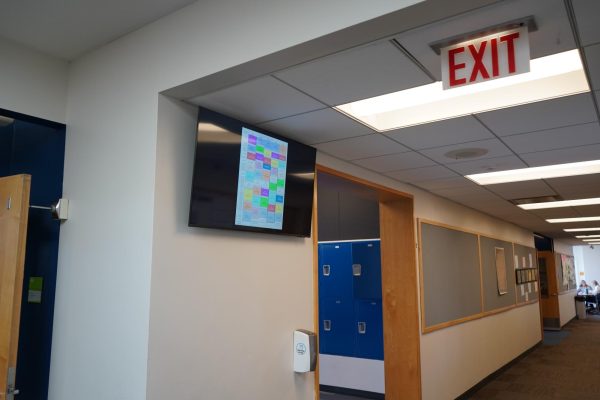Dealing With The End Of DST
Why The Sun Sets Sooner And How To Adjust To It
Photo credit: The Parker Weekly
Why The Sun Sets Sooner And How To Adjust To It
When I woke up on the morning of Sunday, November 7, I looked out of the window and noticed it was lighter than usual. That morning, I was ready to finish a few homework assignments I didn’t get done the previous night, but the lack of sunlight demotivated me. The darkness had an impact on my desire to actually get up and start working for the day. That day ended up progressing as the sunlight started increasing, but it started to slowly decrease once the sun went down. From these experiences, I recommend to the student body, including myself, to complete homework assignments throughout the day so we don’t feel less motivated at night and in the morning.
Daylight saving time begins in March when clocks shift forward an hour and ends in November when clocks shift back an hour to standard time. On November 7, the clocks shifted back one hour at 1:59 a.m. in Chicago. Instead of the clocks hitting 2:00 a.m., they went back to 1:00 am. Since the time has shifted back, the sun will set earlier than usual, around 4:30 p.m. in Chicago. The amount of daylight will also decrease until we reach the winter solstice. In the spring, the clocks will shift forward again and sunlight will last longer until summer solstice.
The creation of daylight saving time happened way back in 1916. During World War I, Germany was the first to adapt this concept as a way of conserving energy and providing more usable hours of daylight. However, the United States didn’t adopt daylight saving time until 1918. Some countries thought daylight saving time wasn’t necessary and that everything should have stayed the same, but after the United States made this switch, many others followed. Daylight saving time is still a system used in 2021 as a way of conserving energy and getting better use of daylight.
As sunlight will appear less throughout the day over the next few months, many people, including myself, will feel a lack of motivation throughout the morning and night. This is a big issue. As the workload increases throughout the school year and the upcoming months, the lack of willingness and motivation will most likely increase from many different perspectives. Many students might struggle with Seasonal Affective Disorder (SAD). This disorder causes depression or downess when they experience less sunlight.
Symptoms of SAD can include difficulty focusing, increased appetite, over-sleeping, weight gain, and feelings of irritability and sadness. Not getting much sunlight during the day is a perfect recipe for winter depression. A solution to help with this seasonal depression is to complete most tasks, including homework, throughout the day so they don’t have to be completed when the sun sets, and you can rather relax and enjoy your night.













